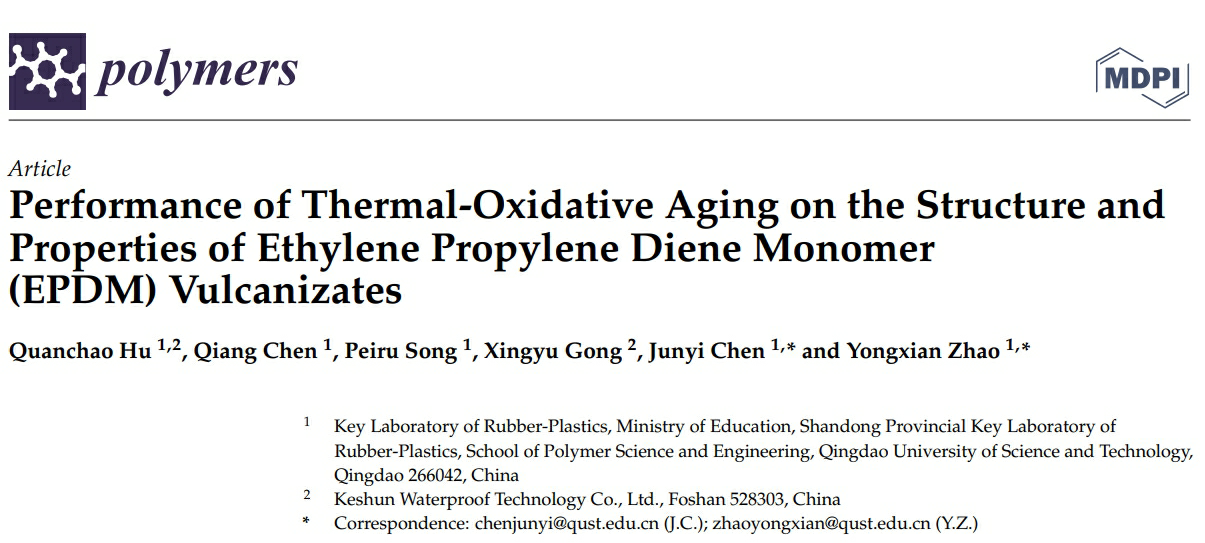
A thermal-oxidative aging test at 120 ◦C was conducted on ethylene propylene diene monomer (EPDM) vulcanizates of the semi-efficient vulcanization system. The effect of thermaloxidative aging on EPDM vulcanizates was systematically studied by curing kinetics, aging coefficient, crosslinking density, macroscopic physical properties, contact angle, Fourier Transform Infrared Spectrometer (FTIR), Thermogravimetric analysis (TGA) and thermal decomposition kinetics. The results show that the content of hydroxyl and carbonyl groups as well as the carbonyl index increased with increasing aging time, indicating that EPDM vulcanizates were gradually oxidized and degraded. As a result, the EPDM vulcanized rubber chains were crosslinked with limited conformational transformation and weakened flexibility. The thermogravimetric analysis demonstrates that the thermal degradation of EPDM vulcanizates had competitive reactions of crosslinking and degradation, and the thermal decomposition curve can be divided into three stages; meanwhile, the thermal stability of EPDM vulcanizates gradually decreased with increasing aging time. The introduction of antioxidants in the system can promote the crosslinking speed and reduce the crosslinking density of EPDM vulcanizates while inhibiting the surface thermal and oxygen aging reaction. This was attributed to the fact that the antioxidant can reduce the thermal degradation reaction level, but it is not conducive to the formation of a perfect crosslinking network structure and reduces the activation energy of thermal degradation of the main chain.


